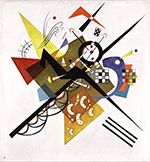
The Action of Mercy
"They stood gazing . . . as if they were faced with some great
mystery, some monument
to another’s victory
that brought them together in
their
common defeat” (230).
Flannery O'Connor "The Artificial N-er" (1955)
Flannery O'Connor's "The Enduring Chill" (1958; 1965), in Collected 547-72
- what lesson does Asbury think his mother needs to learn, and why is he the best one to teach it to her?
- does Asbury want to die? Why, or why not?
- why does Asbury’s mother happily envision him writing novels, plays, and poems at home (555)? Does she value artistic production as a useful intellectual and creative exercise?
- is Asbury right to blame his mother for his artistic impotence (554)?
- what might O’Connor intend the bird-like water stain on his bedroom ceiling to symbolize?
- do any of the characters blanketed by Asbury’s disdain appear to deserve such rough treatment?
- Asbury considers himself to exist “in a state of illumination” as his death approaches (557). Does he indeed see reality more clearly in these final days?
- why does Mrs. Asbury proscribe the consumption of milk right out of the milking machine?
- is Randall correct that Asbury’s problem is a lack of correction from his mother when he was young (560)? Does her current treatment of Asbury provide support for Randall’s observation, one way or the other?
- why does Asbury ask for a priest to visit him in his last days, and does the priest fit the bill?
- why does Asbury have his mother remove most of the furniture prior to the priest’s visit?
- is the priest correct in his description of Asbury as “‘a good lad at heart but very ignorant’” (567)?
- what kind of “communion” did Asbury achieve while smoking with the two dairy workers (558), and does he successfully recreate it on his deathbed (568)?
- what is the “purifying terror” that Asbury fears being confronted with for the rest of his days (572)?
- what is the “last film of illusion” torn from Asbury’s eyes at the conclusion (572)?
Flannery O'Connor's "The Artificial N--er" (1955), in Collected 210-31
- Mr. Head apparently feels confident enough in his sixty years’ experience that he could tell the grave moon “age was a choice blessing” (210). Is such confidence well-deserved?
- perform a close reading of the narrator’s description of Mr. Head in the tale’s third paragraph (210), and use these observations to form an argument about Mr. Head’s character throughout the story.
- on what “moral mission” (211) does Mr. Head intend to lead his ten-year-old grandson, and is it a success? Does he achieve what he set out to achieve?
- the narrator tells us the two males “looked enough like to be brothers . . . for Mr. Head had a youthful expression by daylight, while the boy’s look was ancient” (212). Do the story’s events prove that they are, in character as well as appearance, more alike than dissimilar?
- it’s relatively simple to identify Mr. Head’s attitude towards African Americans at the beginning of the tale. What is it at the story’s end?
- what is O’Connor’s own, emergent attitude towards racism in this period? What does the story itself, that is, suggest about racial prejudice?
- the boy seems rather aggressively defiant of his grandfather initially; does his mentor gradually win over the boys’ respect?
- does the grandfather’s self-confidence constitute sinful pride, from a Judeo-Christian perspective?
- what draws the boy towards the black woman who gives him directions—is it more her race or her gender (223)?
- over the course of the story, the young boy becomes increasingly vulnerable and pliable (223, 224, etc.). Does the grandfather properly use or abuse his grandson’s temporary malleability?
- what of the grandfather’s later vulnerability; does his grandson respond appropriately?
- does the grandfather become either a better or a worse person before the end of the story, or does he remain unchanged?
- to what purpose does O’Connor insert the scene with the “artificial Negro” (229-30)?
- what role does O’Connor assign to suffering in human movement towards Divine mercy (230-31)?
- consider the explicit, didactic nature of the tale’s end relative to the more subtly delivered morals embedded in O’Connor’s other work. Does the directness of this message make the tale more, or less, pleasing as a work of art? To answer this, you must first decide what art should accomplish.

On White, 2 (1923)
Wassily Kandinsky
Dr. Paul Marchbanks
pmarchba@calpoly.edu
![]()
